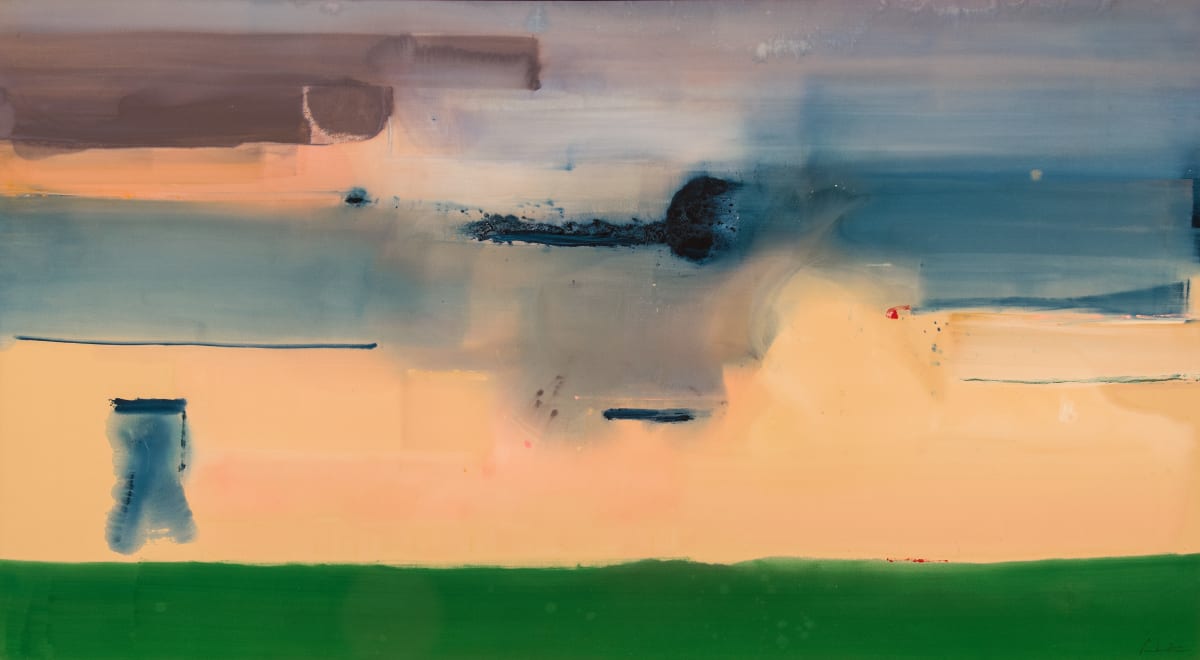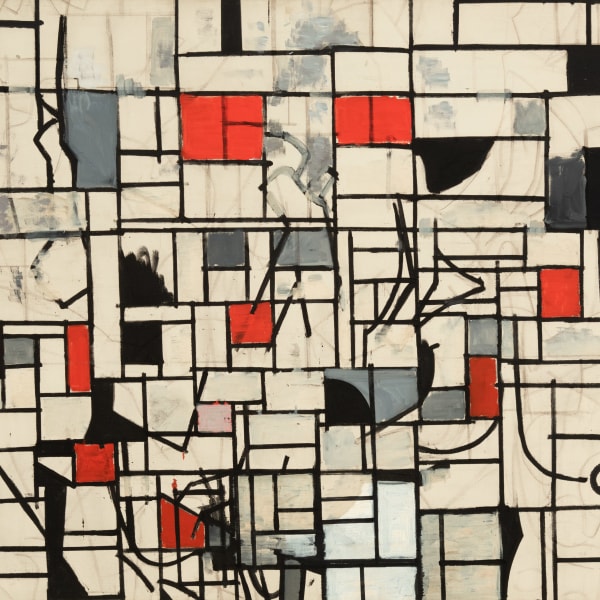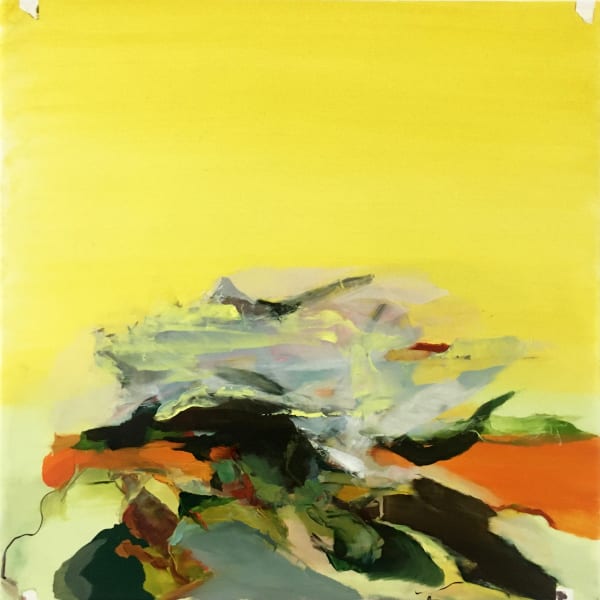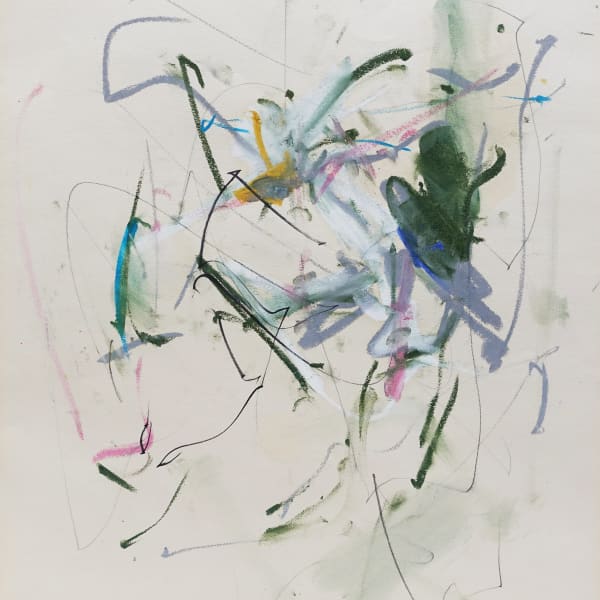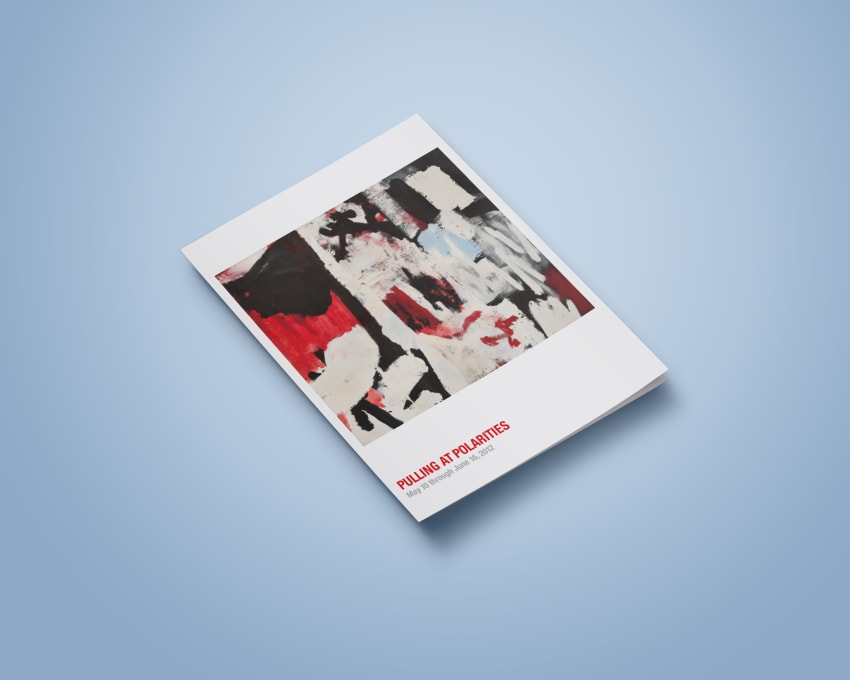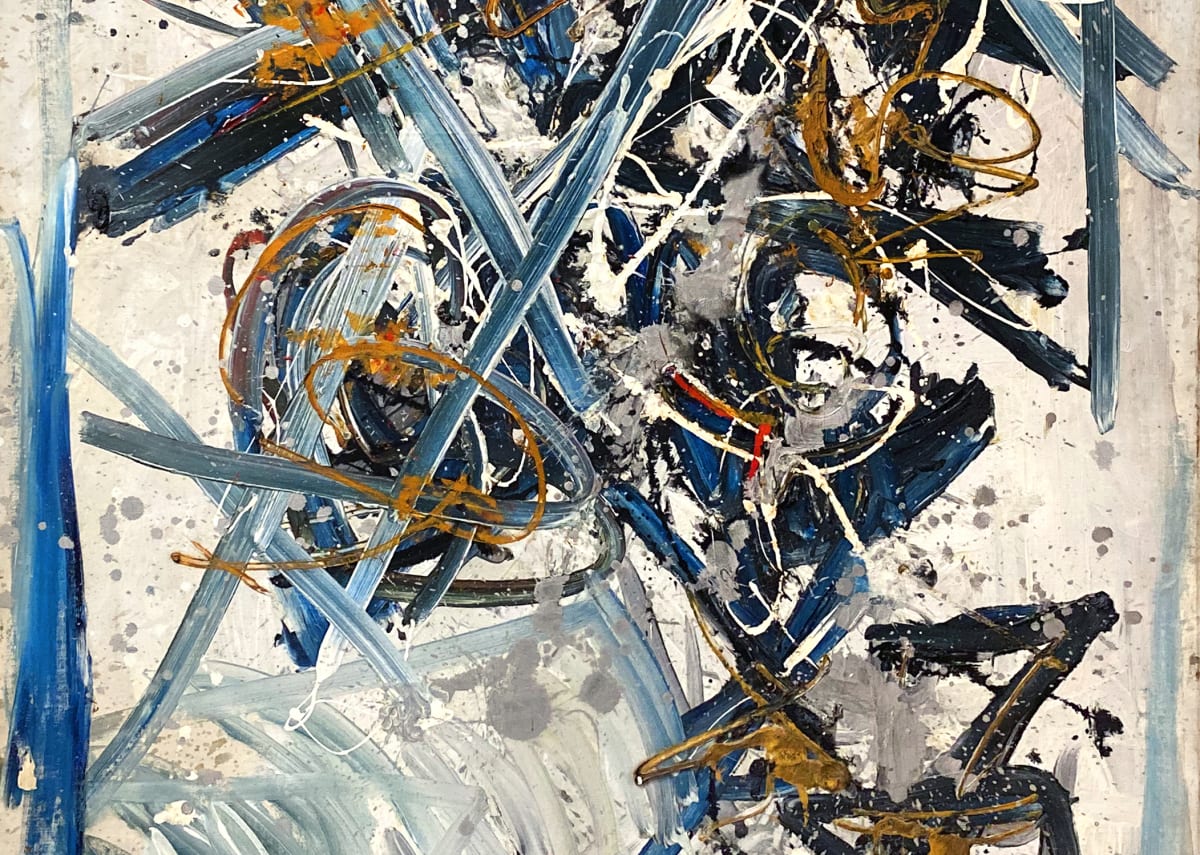
I am an artist of paint, making discoveries.
Over a career that spans six decades, Frankenthaler’s art has received great critical acclaim and has been noted for its painterly virtuosity and celebration of experimentation. As the artist herself described: “I am an artist of paint, making discoveries.” (1) Perhaps even more important than the artist’s technical innovations is her unique sense of “place.” She invites the viewer into pictures that are themselves environments—places where she has been, places she has dreamed of, and abstract places of personal and artistic interests. Writing in response to a 1975 exhibition of the artist’s work at André Emmerich Gallery, the art critic Hilton Kramer praised her ability to conjure novel viewing experiences: “The paintings of Helen Frankenthaler occupy a distinctive place in the recent history of American abstract painting….We feel ourselves in the presence of imaginary landscapes—landscapes distilled into chromatic essence.” (2) Lunar Edge, in its radiance and rich color that glows from within, approximates the surreal feeling of being perched on the edge of the moon alongside an infinite expanse of space.
Over a career that spans six decades, Frankenthaler’s art has received great critical acclaim and has been noted for its painterly virtuosity and celebration of experimentation. As the artist herself described: “I am an artist of paint, making discoveries.” (1) Perhaps even more important than the artist’s technical innovations is her unique sense of “place.” She invites the viewer into pictures that are themselves environments—places where she has been, places she has dreamed of, and abstract places of personal and artistic interests. Writing in response to a 1975 exhibition of the artist’s work at André Emmerich Gallery, the art critic Hilton Kramer praised her ability to conjure novel viewing experiences: “The paintings of Helen Frankenthaler occupy a distinctive place in the recent history of American abstract painting….We feel ourselves in the presence of imaginary landscapes—landscapes distilled into chromatic essence.” (2) Lunar Edge, in its radiance and rich color that glows from within, approximates the surreal feeling of being perched on the edge of the moon alongside an infinite expanse of space.
The luminosity of Frankenthaler’s paintings derives from her unusual “soak stain” method. Frankenthaler’s ground-breaking and most well-known work, Mountains and Sea (on view at the National Gallery of Art, Washington, D.C.), from 1952, launched the style of painting in the 1960s that would become known as Color Field painting. In this work, she allowed thinner pigments to soak directly into the canvas. This staining created a heightened tension between image and abstraction. The weave of the raw canvas was visible within the painted forms, and, at the same time, the visibility of the canvas beneath the painted surface negated the sense of illusion and depth. In this way, Frankenthaler’s innovative device called attention to both the material and the nature of the medium. The technique also generated a new range of liquid-like atmospheric effects reminiscent of the watercolors of John Marin.
In 1953, hearing about the painting from Clement Greenberg, the Washington artists Morris Louis and Kenneth Noland made a special visit to New York to view it and were stunned by the chromatic effects of the stained canvas. Noland recalled that it “showed us a way to think about and use color.” (3) From 1952 onward, Frankenthaler would regularly stain her canvases multiple times to achieve spatially complex, transparent layers. In the 1970s, in particular, she adopted an increasingly wide variety of textures of paint, such that the color often appears suspended within the viscous paint medium. “Up close,” observed Thomas B. Hess, “you can see how [pigments] have been meshed and folded, one into the other, for unnamable hues—strange bicolors, like the green-orange iridescence of a scarab’s wing or the indigo-yellow of certain plums.” (4)
Frankenthaler’s mastery of paint reveals her training under influential and accomplished instructors. She studied with Rufino Tamayo while at the Dalton School, New York, with Paul Feeley (1910–66) at Bennington College, Vermont (1946–9), and privately with Wallace Harrison in 1949 and Hans Hofmann in 1950. In that year she met Clement Greenberg, and through him, became acquainted with Willem and Elaine de Kooning, David Smith, Jackson Pollock, Lee Krasner, Barnett Newman and other members of the New York School. In 1950 Adolph Gottlieb selected her painting Beach for inclusion in the exhibition Fifteen Unknowns at Samuel Kootz Gallery, New York. The following November, Frankenthaler received her first solo exhibition, at Tibor de Nagy Gallery. In these several years after graduating from Bennington College in 1949, the artist took advantage of New York’s thriving art scene, visiting museum exhibition and fellow artists’ gallery shows, and formed a number of lasting and deep friendships, including with the poets John Ashbery and Frank O’Hara. O’Hara authored the catalogue essay for Frankenthaler’s first retrospective exhibition, at the Jewish Museum in 1960.
Like several of the exponents of Abstract Expressionism, she was concerned with the forms and energies latent in nature. She often characterized herself as more interested in the drawing of color than color itself, for in her draughtsman-like approach and “well ordered collisions” of paint and drawing, she generated motion in her compositions. In this painterly approach, she stands out among her contemporaries, creating a unique body of work that lies in between the gestural abstraction of Jackson Pollock and the restrained Color Field approach of Louis, Noland, and Mark Rothko.
From 1958 to 1971, Frankenthaler was married to fellow artist Robert Motherwell, and the two maintained studios in New York and Provincetown. She also traveled extensively, often with Clement Greenberg, and loosely derived inspiration from the places she visited for the color palettes or moods of her paintings. Italy, France, Nova Scotia, Majorca, Barcelona, Germany, the Netherlands, Arizona, and Provincetown all proved inspirational to the artist. During her travels, she visited renowned art museums, studying old masters, and later she created paintings inspired by artist’s works in these collections, ranging from Titian, Rembrandt, and Goya, to Manet, Matisse, and even the Japanese artist Hiroshige. Her paintings have also drawn comparisons to J.M.W. Turner’s exquisite meditations on mid-winter sunsets and Frederic Edwin Church’s Cotopaxi. (5)
Her artistic experimentation was not limited to painting; indeed, she explored pictorial space in a broad variety of media, including painting on canvas and paper, printmaking, sculpture, ceramics, and tapestry design. In the 1960s, Frankenthaler began to make prints in the Universal Limited Art Editions workshop on Long Island, and also crafted earthenware plates at Bennington Pottery in Vermont, along with David Smith. She reprised her interest in ceramics in the early-mid 1970s, when she executed a tile wall commissioned for the North Central Bronx Hospital, New York. In 1972, during a burst of new energy, Frankenthaler welded ten steel sculptures in the studio of her dear friend Anthony Caro. That year she exhibited these sculptures as well as some works on paper at André Emmerich Gallery in New York.
As her range of artistic activities expanded, so did her international and national reputation. Frankenthaler has received numerous accolades, including prestigious awards and honorary degrees from Harvard University; Yale University; Smith College; Moore College of Art, Philadelphia; Amherst College; New York University; and Brandeis University. Her works appear in the collections of the Museum of Modern Art, New York; National Gallery of Art, Washington, D.C.; High Museum of Art, Atlanta; Museum of the 20th Century, Vienna; Museum of Fine Arts, Boston; Los Angeles County Museum of Art; and numerous other public institutions.
1. Quoted in E.A. Carmean, Jr., Helen Frankenthaler: A Paintings Retrospective (New York: Abrams; Fort Worth, Texas: Modern Art Museum of Fort Worth, 1989), 12.
2. Hilton Kramer, “Art: Lyric Vein in Frankenthaler’s Paintings,” The New York Times, 15 November 1975, 21.
3. Quoted in Carmean, Jr., Helen Frankenthaler, 12.
4. Cited in Elderfield, Frankenthaler, 297.
5. Most notably to Church by E.C. Goossen in “Helen Frankenthaler: Notes on Some Recent Paintings,” Bennington Review (April 1978): 46, and to Turner by Michael McKinnon, comp., The History of Western Art, sec. 31: Art of the ‘70s (London: Visual Publications International, 1982).









